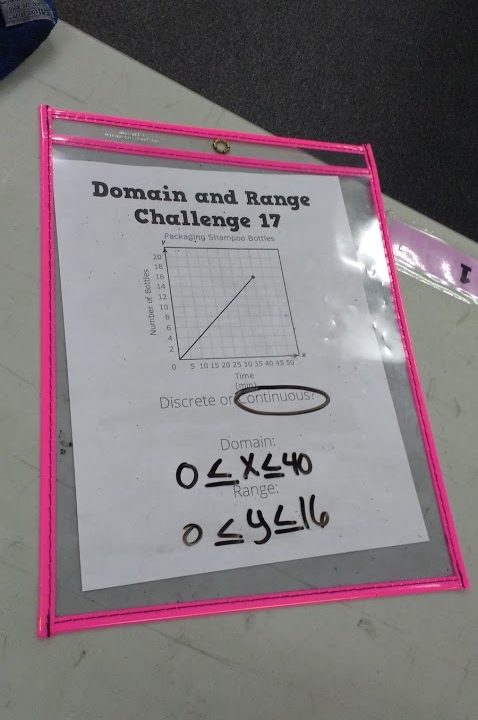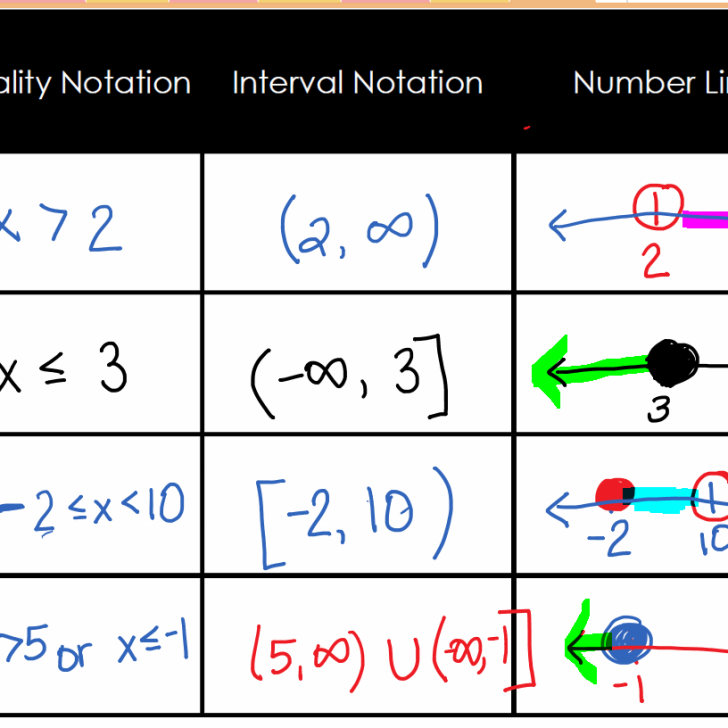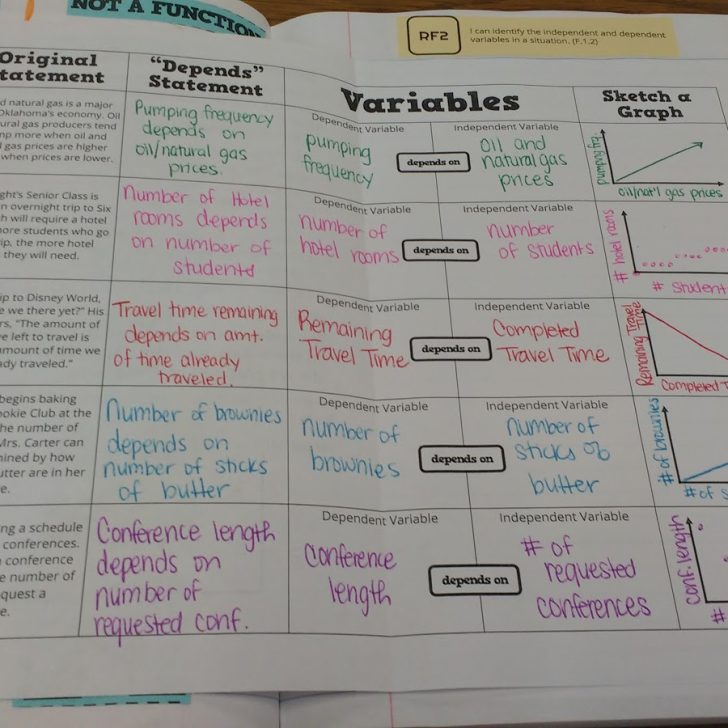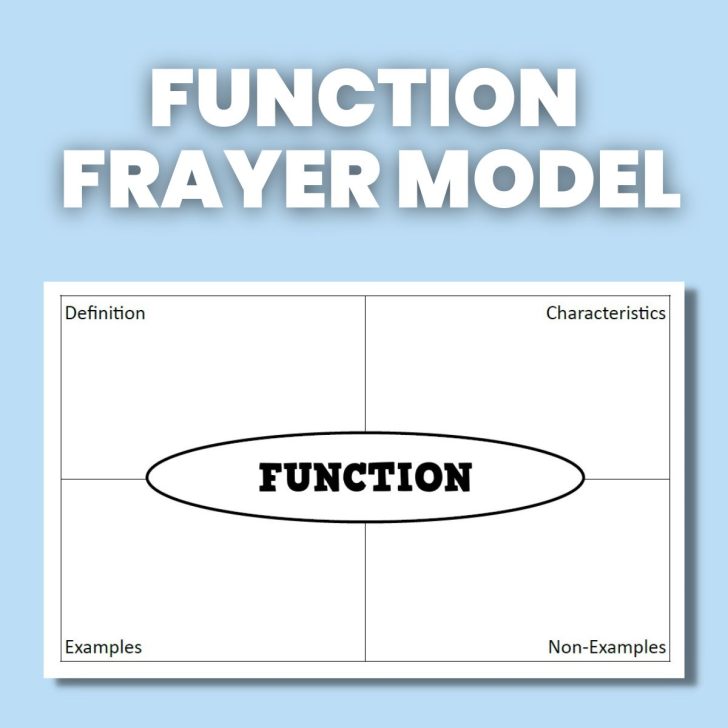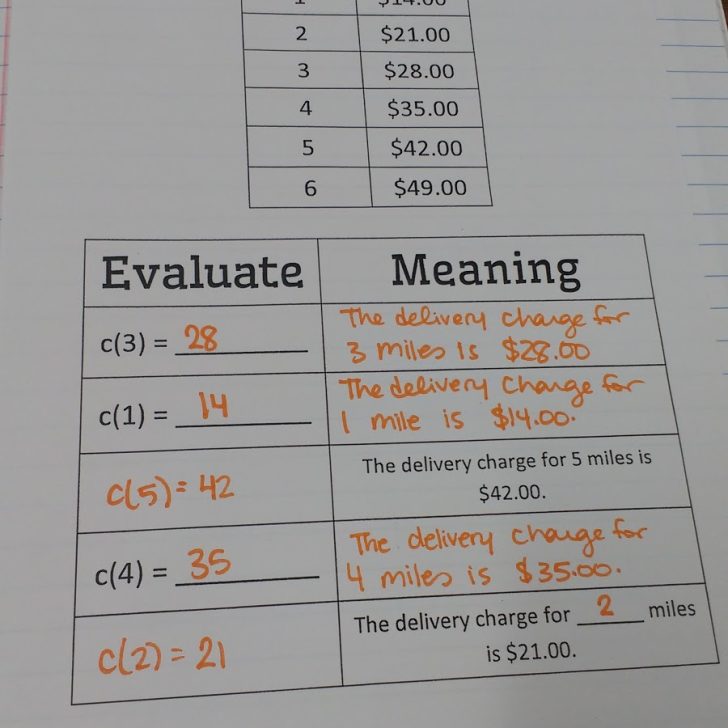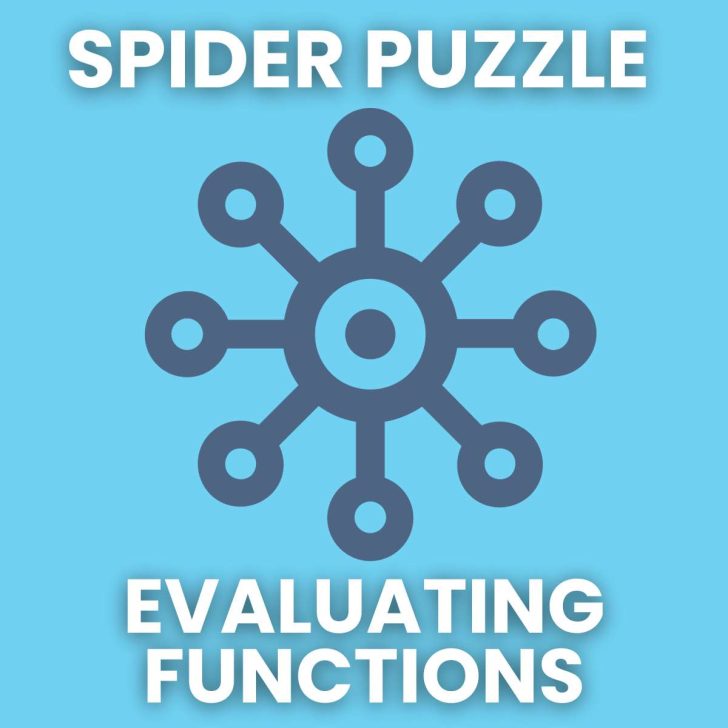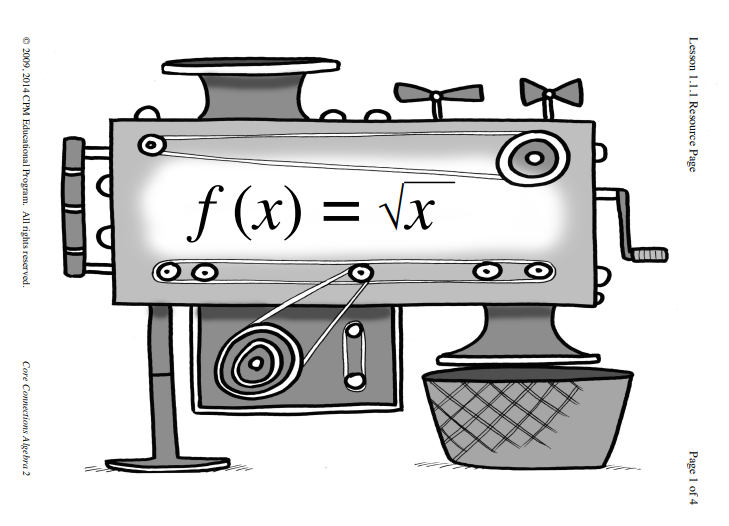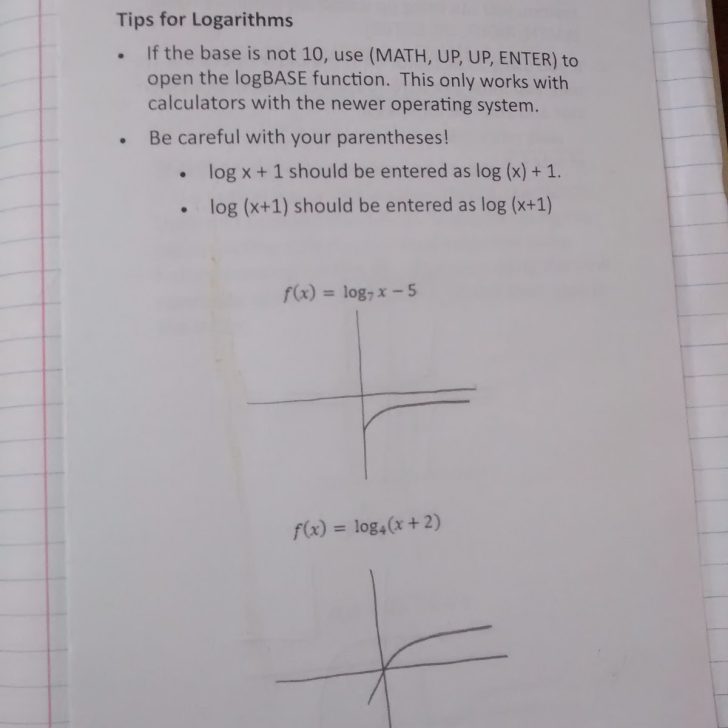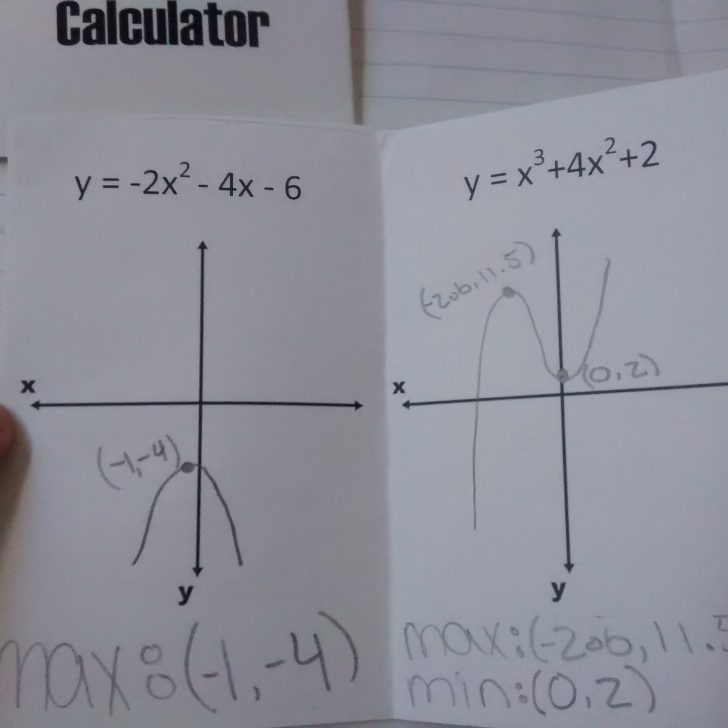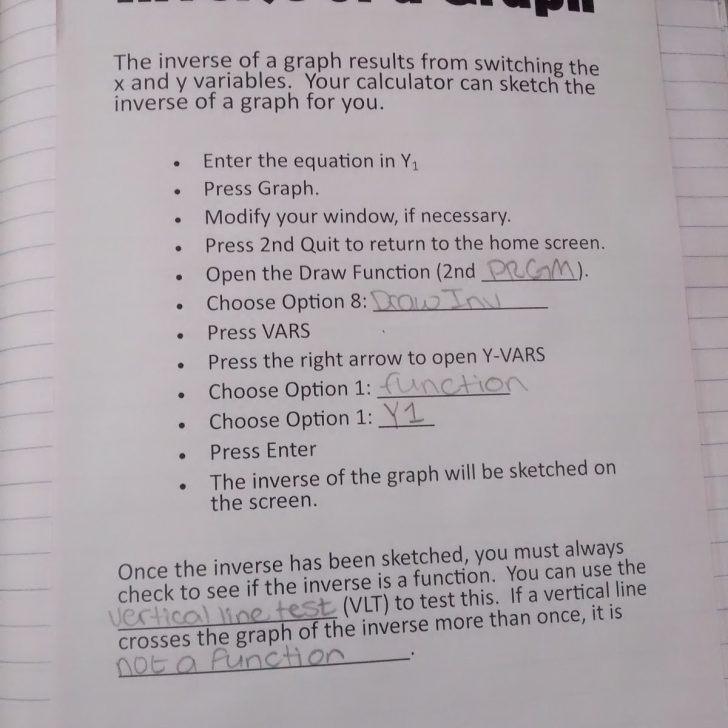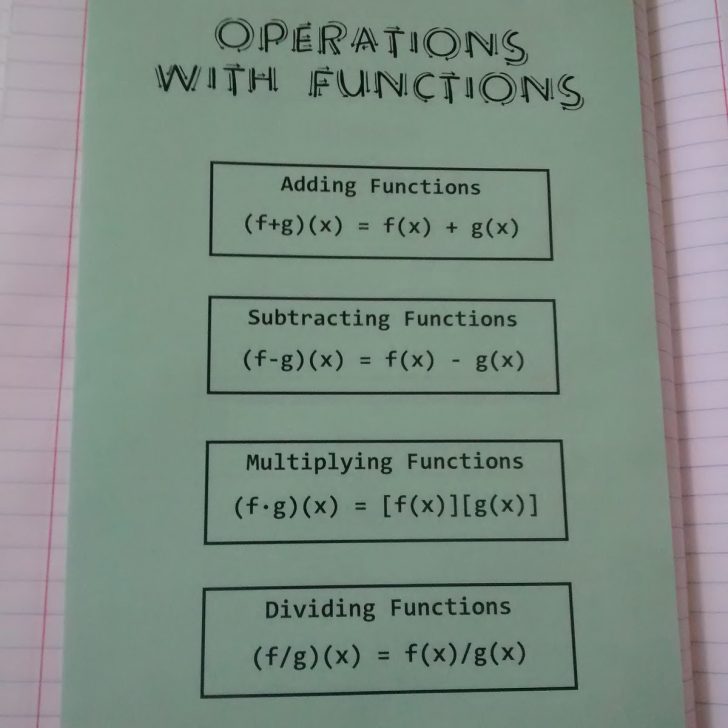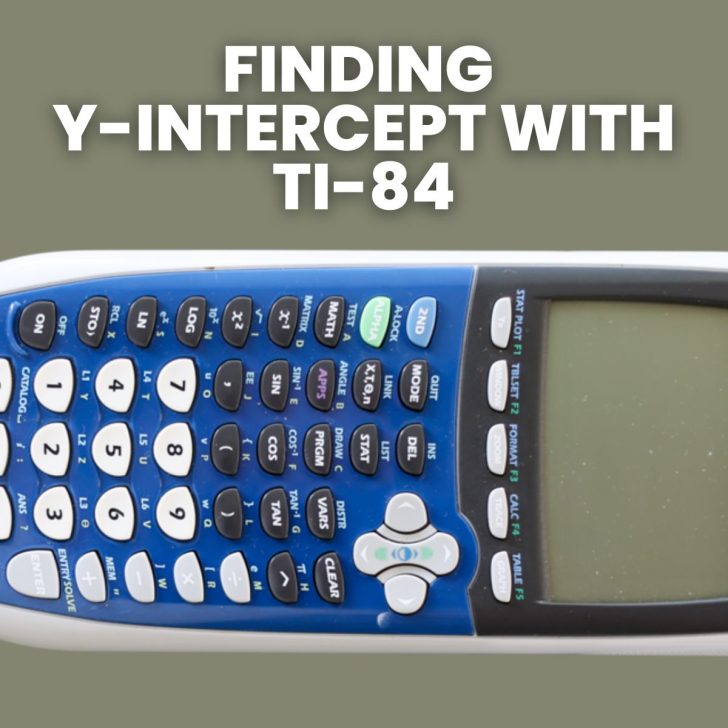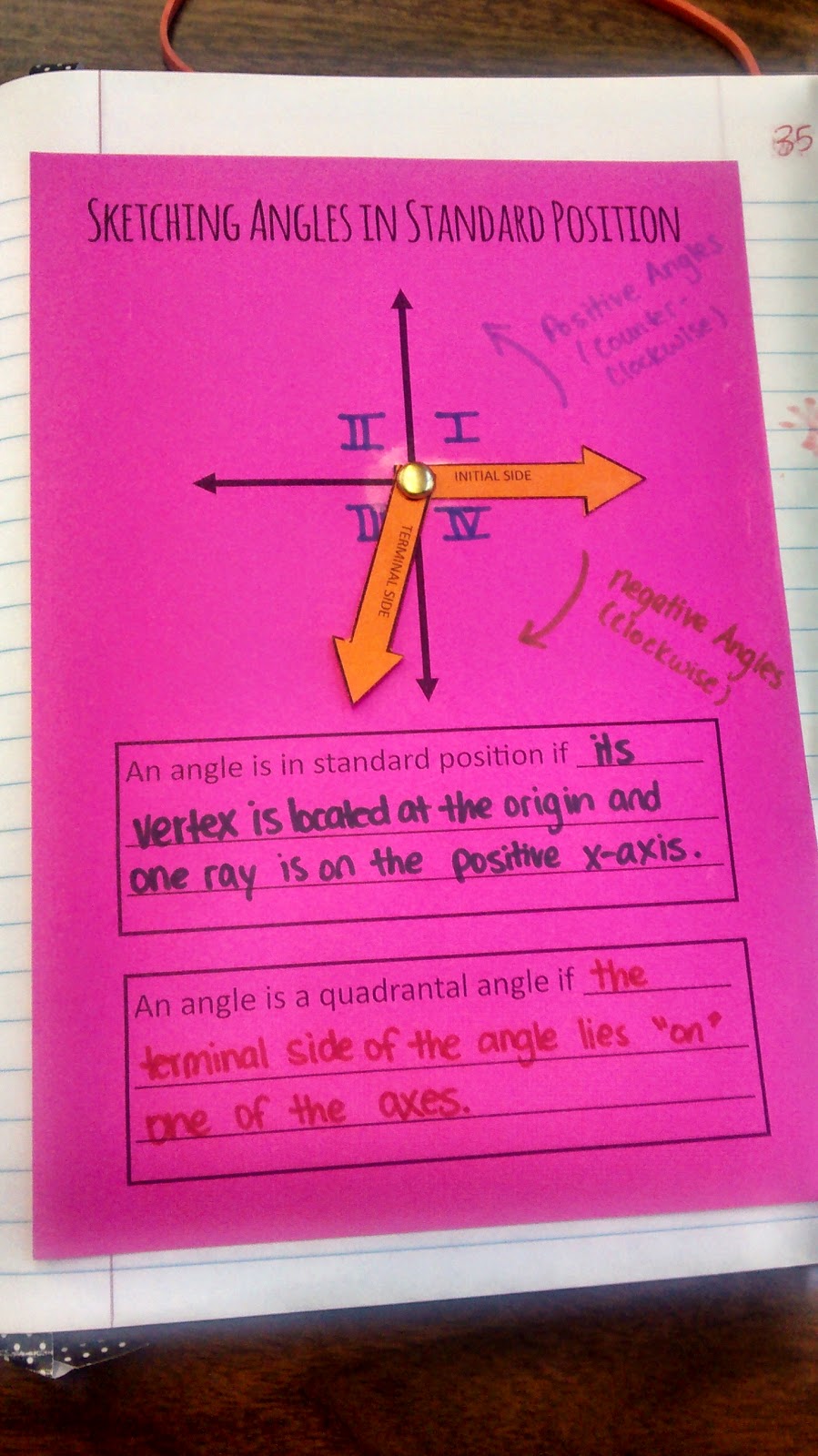“Win Some Cash!” Task
I really liked how this Win Some Cash task went with my Algebra 1 student!

Yesterday, we started graphing functions in Algebra 1 by making input/output tables. I wanted to find a task to use with my students to introduce the concept without just jumping into a million practice problems.
Thankfully, I saved a bunch of math tasks this summer and attempted to categorize them for future reference. One of these tasks turned out to be the perfect introduction!
I found this task on the Riverpoint Advanced Mathematics Partnership – Algebra (RAMP-A) website.
Here’s the original task:

I modified the task wording slightly. Here’s my take on the task. It’s formatted to glue in my students’ interactive notebooks.

Your math teacher has recently come into a large inheritance. She announces that during one period of the day she is going to give one lucky student in the school some money. The money she will pay the winner will be determined by one of the functions below, where x is the period of the day in which the money is awarded.
A(x) = 2^x – 1
B(x) = 2x
C(x) = 2x^2
She hasn’t decided which period of the day she will give the money away, but she has decided that the student who is chosen will immediately have to choose which function they would prefer to be paid by. Assuming you are the winner, how should you choose?
After reading the task, students were full of ideas and opinions. I tried to help them focus their ideas a bit by asking them to consider which function they would choose if their math teacher deemed them the winner 4th period.

It was fun to watch the students’ opinions change as we worked out the values for each function. In their words “B is trash!”
After working out all of the function values, we graphed each function on the coordinate plane. We had a good conversation about how to label our axes. In retrospect, I should have made the graph a bit larger because counting by 5’s on the y-axis only got us to 120 when our highest value was 127.
Some of my students suggested counting by 10’s, but that would put us at 240 with almost half of the graph not being used. We decided to count by 5’s and have one of our points slightly off the graph. Of course, a few students suggested we count by 7’s or 9’s.

As we graphed each function, I had students label the function type. This was my students’ first experience with the terms linear, quadratic, and exponential. The conversations surrounding why each function was labeled its appropriate name was so refreshing to hear in my classroom!
We summed up the task by writing how we would choose the function if we were the winner. This was definitely a worthwhile way to spend the majority of a class period.
When I did this task again in 2018, I realized a mistake I made before.

Last year, I had my students connect the dots to more easily see the shapes made by exponential, linear, and quadratic functions. This year, I highly emphasized discrete vs. continuous graphs and when it makes sense to connect the dots and when it doesn’t.
This is actually a discrete function, so we couldn’t connect the dots this year. With this in mind, I’d like to edit the activity a bit next year to bring out the general shapes of different types of functions more clearly.

Also, note to self: make the graph bigger. I made a note about that last year, and I forgot to fix it before printing it again for this year!
Free Download of Win Some Cash Task
Win Some Cash Task (PDF) (757 downloads )
Win Some Cash Task (Editable Publisher File ZIP) (663 downloads )
More Activities for Teaching Functions
- Set and Interval Notation Dry Erase Template
- Pinwheels for Peace 2019
- Build a Function Activity
- Domain and Range Challenge Activity
- Sketch a Graph Activity
- Inequality and Interval Notation Chart
- Key Features of Functions Work Mat
- Find the Flubs Activity – Set and Interval Notation
- Domain and Range Restrictions Foldable
- Domain and Range Foldables
- Domain and Range Graphic Organizer DIXI ROYD
- Independent vs Dependent Variables Foldable
- Function Frayer Model
- Function Notation Puzzler
- Evaluating Functions from a Table Notes
- Evaluating Functions from a Graph Notes
- Evaluating Functions from an Equation Notes
- Graphing Functions Using Input/Output Tables Foldable
- Writing Functions Foldable
- Popcorn Graphs Activity
- Graphing Stories Foldable
- Discrete vs Continuous Functions Foldable
- Evaluating Functions Spider Puzzles
- Function vs Not a Function Card Sort Activity
- Function Machines Activity from CPM
- “Win Some Cash!” Task
- Evaluating Functions Puzzle Activity
- Function vs Not a Function Puzzle Activity
- Function Auction Activity
- Evaluating Functions War
- Algebra 2 Graphing Equations Foldable
- Algebra 2 Domain and Range Foldable
- Increasing and Decreasing Intervals Foldable
- Finding the Max or Min of a Graph [TI-84 Instructions]
- Finding Maximums and Minimums Practice Book
- Finding Intercepts with the Calculator Practice Book
- Finding Equations of Inverses Foldable
- Sketching the Inverse of a Graph [TI-84 Steps]
- Two Truths and a Lie: Parent Functions
- Operations with Functions Dice Practice Activity
- Operations with Functions Foldable
- Finding X-intercepts of a Graph [TI-84 Instructions]
- Finding the Y-intercept of a Graph [TI-84 Instructions]
- Drawing Boxes for Domain and Range
- Composition of Functions Foldable
- Sketching Inverses Practice Book
- Graphing and Describing Functions Worksheet
- Parent Functions Card Sort Activity
- Evaluating Functions Notes
- Justifying Function or Not a Function Notes
- Graphing Functions on the Coordinate Plane Graphic Organizer
- Function Machines and Function Notation Foldable
- Function Transformations Foldable
- Relations, Functions, and Dating Advice
- Describing Characteristics of Graphs Foldable
- Interactive Domain and Range Foldable
- DIX ROY Acronym for Domain and Range
- Finding the Inverse of a Function Foldable
- Characteristics of Graphs & Functions Foldable
- Domain and Range Pictionary Activity
- Notation for Domain and Range Foldable




